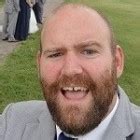This post on behalf of Emortgage Calculator
One of the more important parts of buying a house, is not over spending on the house that you plan on buying. Despite all the headlines during the recent real estate boom and crash, people are still trying to buy much more house than they can reasonably afford. When they do that, any little setback can be a disaster to their housing situation. Think about it; if you’re already stretching to pay the mortgage, and you lose your job or have some other major expense, will you still be able to pay the mortgage next month? Probably not. And that’s where the trouble begins.
 Many will say that you shouldn’t buy a house where the mortgage payment accounts for more than 40% of your income. Some will include the escrow and utilities into that equation, some do not. Being the frugal fellow that I am, I suggest you shoot for a far smaller number than that. If you want to truly be able to afford your house, the mortgage payment, including escrow (but not utilities), shouldn’t exceed 25% of your income. If you really think about it, do you really want to pay any more than one quarter of your income on just your house? How will you afford anything else, let alone pay down debt?
Many will say that you shouldn’t buy a house where the mortgage payment accounts for more than 40% of your income. Some will include the escrow and utilities into that equation, some do not. Being the frugal fellow that I am, I suggest you shoot for a far smaller number than that. If you want to truly be able to afford your house, the mortgage payment, including escrow (but not utilities), shouldn’t exceed 25% of your income. If you really think about it, do you really want to pay any more than one quarter of your income on just your house? How will you afford anything else, let alone pay down debt?
There are several ways that you can estimate how much house you can buy. Your lender will tell you how much you can buy and still qualify for the loan, but that’s a terrible way to go about it. They are only interested in completing the loan, not whether you can pay for it for 30 years. Many of the real estate websites will have a loan calculator on their sites as well, which can give you a pretty close estimate. If you’re in the UK, the Emortgage Calculator can help you estimate those costs. Most calculators will ask you a few simple questions. How much is the house worth (value), how much will you borrow (loan total), how long will you borrow it (Term), and at what interest rate (Rate). Using those numbers, the calculator will amortize the loan, and return the estimated monthly payment on the mortgage. Use that number, plus an estimated escrow amount (roughly 20-25% of the payment amount makes it a safe estimate), and you’ve got a number that you can use to determine if the house is too much house for you. Then, you can continue on with shopping for a house.
A few other notes. Yes, an “interest only” loan gives you a much smaller payment amount and may seem like a good way to get into a house that you otherwise couldn’t afford. But, you’re only paying interest for that period. When the interest only period ends, so does your affordable payment amount. Then, you’re stuck with a much larger payment, and all of the principle of the loan. Same goes for an “ARM”, or “Adjustable Rate Mortgage”. The payment is nice and low before the first adjustment period, but when that adjustment happens, the payment can go up by a good amount. Avoid both and stick with the conventional 15 or 30 year mortgages. You’ll be glad you did.
photo credit: woodleywonderworks

Shane Ede is a business teacher and personal finance blogger. He holds dual Bachelors degrees in education and computer sciences, as well as a Masters Degree in educational technology. Shane is passionate about personal finance, literacy and helping others master their money. When he isn’t enjoying live music, Shane likes spending time with family, barbeque and meteorology.




